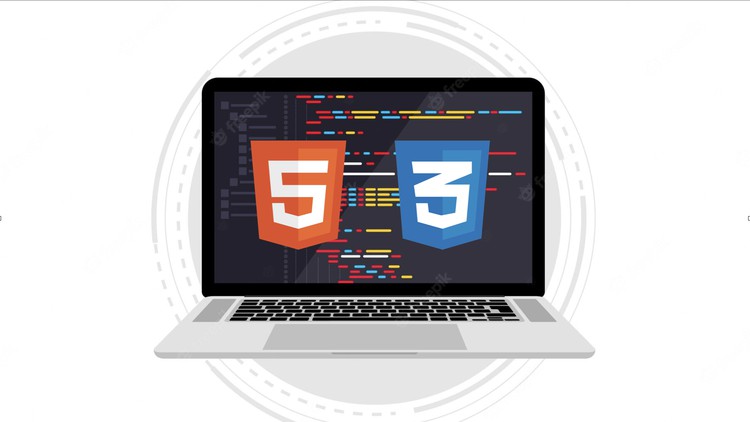
Web Development for absolute beginners. Learn HTML and CSS from scratch.
What you will learn
Prepare for Industry Certification Exam
Using CSS, you can control the color of the text, the style of fonts, the spacing between paragraphs, how columns are sized and laid out, background images
You will learn how colors are used, layout designs, variations in display for different devices and screen sizes as well as a variety of other effects.
You understands the basic of HTML and CSS
HTML
HTML5
The Structure of an HTML Page
HTML Lists (Ordered, Unordered)
HTML Embedding Videos
Link Creation
Anchor Tags
Tables
Form Tags and Attributes
How to implement Audio
How to implement Video
Description
Welcome to the “Web Development : HTML & CSS Tutorial For The Beginners”
If you want to start your career in Web Development, HTML and CSS are essential skills to have because they are foundational languages of the web.
HTML stands for Hyper Text Markup Language. In short HTML is a markup language that is used developing web pages.
Html css, hmtl, html5, html, website design, website coding, build responsive real-world websites with html and css, responsive web design, website designer, design website, web development, html tutorial, html tutorial for beginners, html, html5 for beginners, html5 tutorial, html complete course, html5 complete course
This two part series provides an in-depth look at the fundamentals of coding in HTML and HTML5. We start with exploring HTML Development using some of the most commonly used tags and attributes. Who wants to learn HTML,Basic Html Document Structure, HTML Head Tags, HTML Title Tags , HTML Lines , Comments tags, HTML Paragraph, Line Break tags, HTML Text Formatting Tags, HTML Elements, HTML Attributes Tags, HTML Image Tags, HTML List tags, HTML Table Elements, HTML Link Tag, HTML Inline , Block Elements, HTML Form, HTML5, HTML5 Content Model, HTML5 Structure, HTML5 Header, HTML5 Nav, HTML5 Footer, HTML5 section Tags, HTML5 Article Tags, HTML5 Aside Tags, HTML5 Media Tags – Audio, HTML5 Media Tags – Video, HTML5 Progress Bar, HTML5 Form can enroll this course.
Students will learn the composition of an HTML file, and some of the essential components.
Html css, hmtl, html5, html, website design, website coding, build responsive real-world websites with html and css, responsive web design, website designer, design website, web development, html tutorial, html tutorial for beginners, html, html5 for beginners, html5 tutorial, html complete course, html5 complete course
What is HTML? Why is it important?
HTML stands for Hypertext Markup Language. Every website you visit, whether it’s a mobile device or a computer, is designed in HTML. HTML is not a “programming language”, but a “format language”. Tells the browser how to display text, images, and other media elements. When HTML was first developed, it was very simple. For example, you can bold, italic, or underline the text on the page, resize, and position the image. HTML is now much more complex and dynamic, allowing front-end developers to create the layouts and setups they need.
Why is CSS so important to HTML?
HTML is a formatting language, not a programming language. CSS (Cascading Style Sheets) are used to organize the look and feel of your website and make it easier to update and edit your website. Today, HTML and CSS are widely used to develop responsive web design, a design that adapts to the user’s environment to improve the user experience.
What is a Cascade Style Sheet (CSS)?
CSS or Cascade Stylesheet is the stylesheet language used to style the markup language. Markup languages include HTML, XHML, XML, and other XML-based languages. The most common use of CSS is styling HTML web pages. HTML doesn’t have to work with CSS, but all web pages look the same without CSS. You can use CSS to change the appearance and placement of a page by targeting specific elements on your web page. You can use CSS to make embedded images smaller or cover the entire web page as a background. You can enlarge the heading and apply specific fonts to make it stand out from the rest of the page. Other things you can do with CSS are to change the color of the element or float the element on one side of the page. The list continues. All web pages use HTML, and all web pages with a unique look use CSS.
Which profession uses CSS?
CSS applies to all carriers, including web development. Web designers use the HTML and CSS that web developers use to create websites to create website templates, mockups, and styles. Front-end web developers use CSS, HTML, and JavaScript to create front-end web applications that run in a browser. Full-stack web developers need to create parts of a web application that runs in a browser and server and master CSS to make the front end look good. Content managers may need to know CSS in order to apply custom styles to articles published through content management systems such as WordPress. Other positions that may require CSS knowledge are junior web developers, social media managers, website editors, content editors, website project managers, website support specialists, and webmasters.
Content